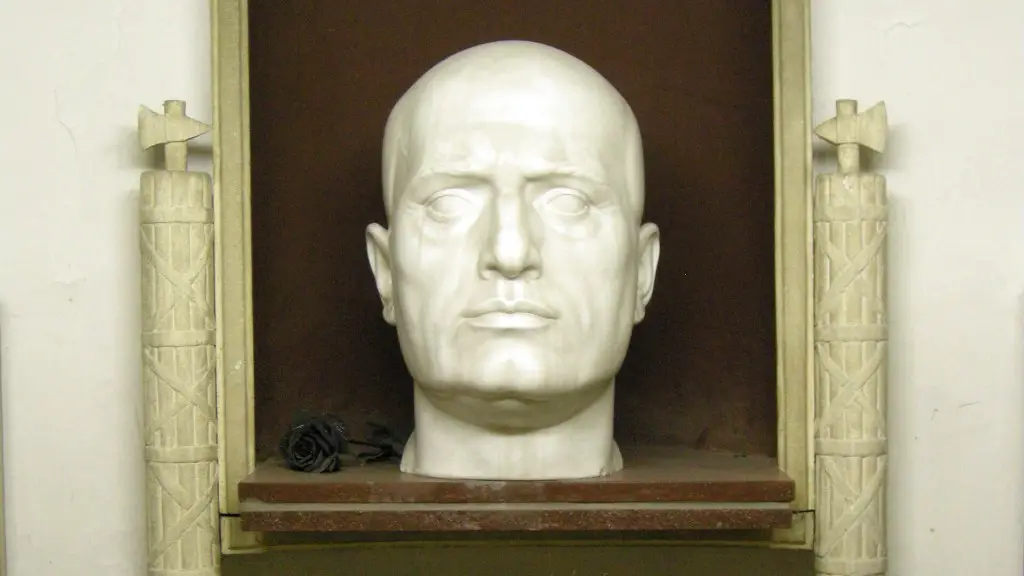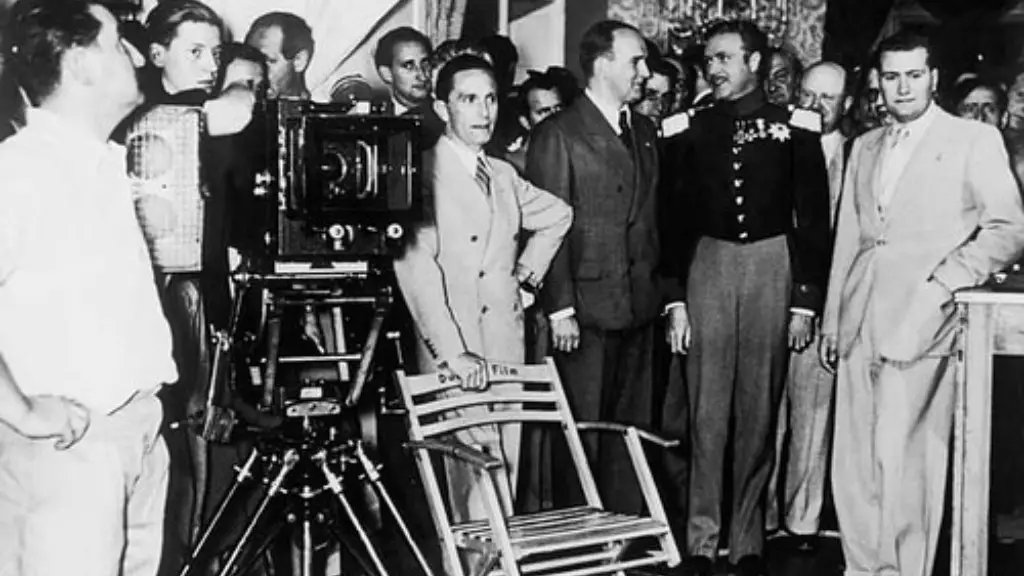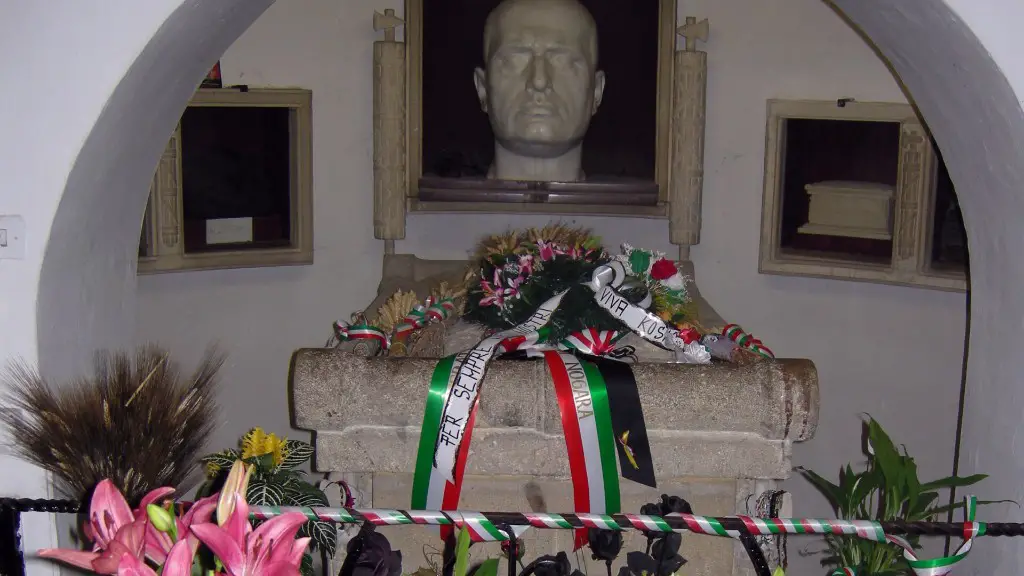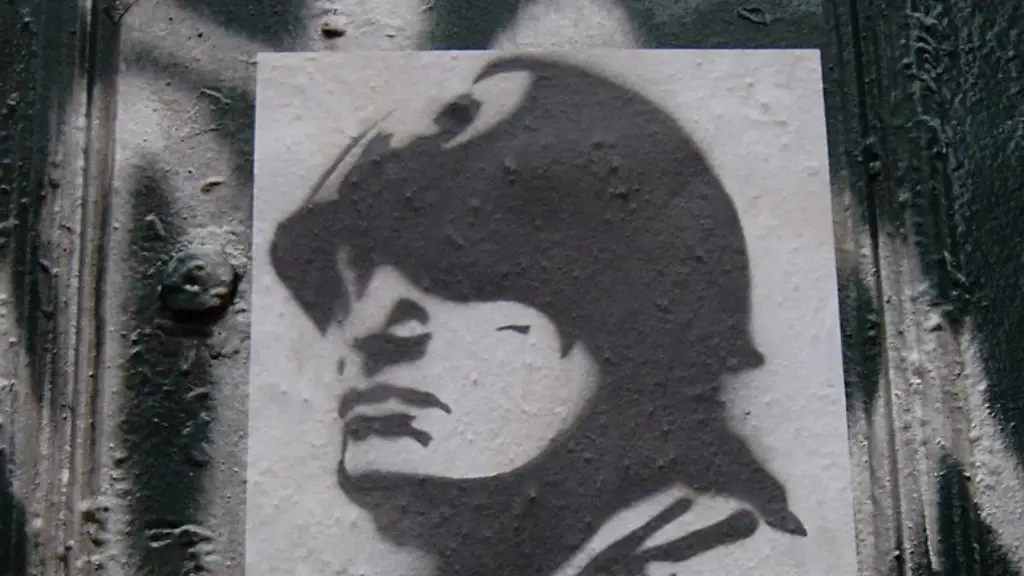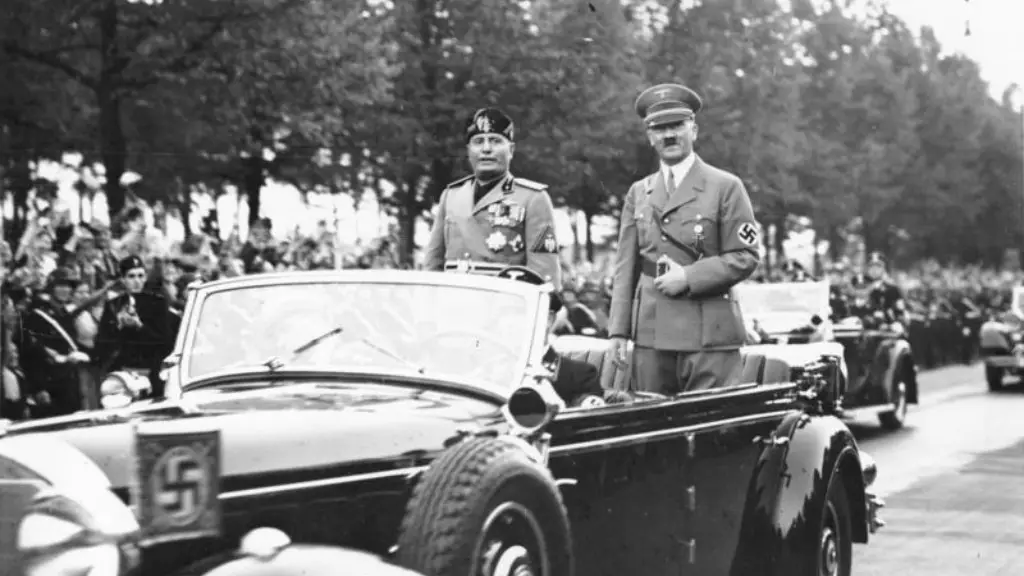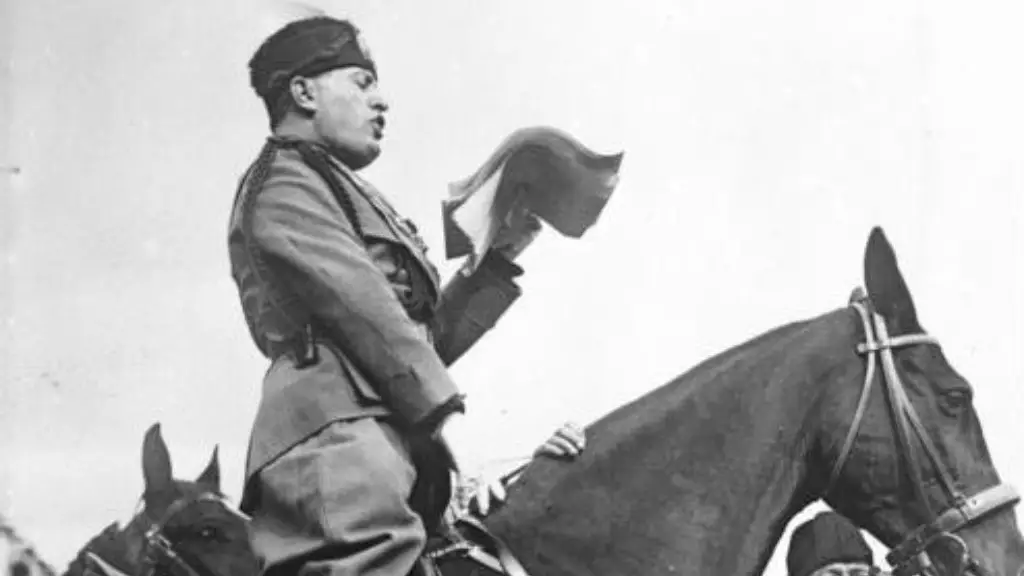In 1922, Benito Mussolini took control of the Italian government in a coup d’état and became the country’s dictator. He rose to power through his aggressive rhetoric and his promises to make Italy great again. Mussolini was a skilled speaker and a clever politician, and he used these skills to gain support from the Italian people. He also benefited from the fact that Italy was a chaotic country at the time, with a weak economy and a number of political parties that were constantly fighting with each other. Mussolini was able to take advantage of this chaos and turn it to his own benefit.
Mussolini was a charismatic leader who rose to power in Italy in the early 1920s. He was a skilled speaker and was able to appeal to the Italian people. He promised to make Italy great again and to restore order to the country. He was also a strong leader who was not afraid to use violence to get what he wanted. Ultimately, Mussolini was able to take control of the Italian government and establish a dictatorship.
How and why did Mussolini come to power?
The 1924 assassination of socialist leader Giacomo Matteotti by Mussolini’s followers marked the beginning of his fascist dictatorship. In a speech to Parliament on January 3, 1925, Mussolini took responsibility for the assassination, solidifying his grip on power. Opposition deputies boycotted Parliament in protest, but were unable to prevent Mussolini from consolidating his hold on Italy.
Mussolini was a controversial figure and his appointment as prime minister was met with criticism from many. However, Victor Emmanuel claimed that he was trying to prevent a civil war and that Mussolini was the best person for the job. Time will tell whether or not this was the right decision.
What did Mussolini do when he got power
Mussolini’s rule was characterized by totalitarianism, a single-party dictatorship, aggressive nationalism, Fascist symbolism, and strict censorship of the press and public discourse. After consolidating power, Mussolini suppressed opposition to his rule and introduced strict censorship. He closed down opposition newspapers and banned public protest meetings. He declared all political parties illegal except for his own Fascist Party. He outlawed labor unions and strikes. He also established a political police force, the Organization for Vigilance and Repression of Antifascism.
The Fascists marched on Rome in 1922 in order to demand changes from the government. This resulted in the king giving Mussolini power over Italy. Mussolini suppressed rival parties, muzzled the press, rigged elections, and gave the Fascist party power. He also recognized the Vatican city as an independent state.
How did fascism rise to power?
The Fascist Party rose to prominence in Italy after aligning itself with Italian conservatives. The party used violence and intimidation to seize power in Rome in 1922 under the leadership of Benito Mussolini.
Mussolini’s achievement in becoming the youngest prime minister in Italian history was impressive and he was rightfully proud of it. He was a skilled politician and had a clear vision for Italy. His leadership helped to turn Italy into a major power in Europe.
What did Mussolini fight for?
Mussolini was a committed fascist by 1918. He believed in a national struggle that transcended class lines, rather than a class struggle. This caused him to split with the socialists during the war. He became an ardent Italian nationalist instead.
The Fascists Seize Control of Italy is a very important event in history. This is because it was the start of Mussolini’s dictatorship and the beginning of World War II. The Fascists were a political party in Italy that believed in a strong central government, order, and traditional values. They were opposed to socialism, communism, and democracy. On October 22, 1922, the Fascists seized control of Italy through a coup d’état. They then started to govern Italy as a dictatorship. This event led to World War II because Mussolini’s dictatorship was one of the causes of the war.
Why did Mussolini take control of Italy
The Italian economy grew rapidly between 1921 and 1925, owing in part to development policies pursued by the government of Prime Minister Mussolini. One of the most notable aspects of this economic boom was the significant reduction in unemployment, which fell by 77 percent over the course of the four-year period. The improved economic conditions bolstered Mussolini’s political standing and helped him to pursue his real agenda: government control of the economy. In 1925, he dismissed De’ Stefani, the Minister of Commerce and Industry, who had been a key figure in orchestrating the economic boom.
Mussolini wanted to make Italy a powerful empire by expanding its territory. He believed that this would make the country stronger and more respected by other nations. To do this, he made plans to conquer new lands, build up the military, and improve the economy.
What was a key cause for the rise of fascism?
The Great Depression led to a major surge of fascism around the world. In Germany, economic depression was one of the major causes of the rise of Nazism. The Nazis were able to gain power by promising to improve the economy and providing a sense of order and stability in the midst of social unrest.
The Fasces of Revolutionary Action was an Italian fascist organization founded in 1915 by Benito Mussolini. In 1919, Mussolini founded the Italian Fasces of Combat in Milan, which became the National Fascist Party two years later. The Fasces of Revolutionary Action was the first step in the creation of the Italian fascist movement.
What did Mussolini want for Italy
Mussolini was a controversial figure in Italy during WWII. He was a strong advocate for the country joining the war, which put him at odds with the Italian Socialist Party. The Party eventually expelled him due to his pro-war stance. In response, Mussolini formed his own political movement, the Fasces of Revolutionary Action. The goal of the movement was to encourage Italy to enter the war. Mussolini’s efforts ultimately proved unsuccessful and Italy remained neutral throughout the conflict.
Italian fascism was a political movement that was rooted in Italian nationalism. The Italian fascists believed that the nation needed to assert its superiority and strength in order to avoid decaying. They also believed that expanding Italy’s territories was necessary in order to make the nation more powerful. The fascists used violence and intimidation in order to achieve their goals.
What is the root of fascism?
The word ‘fascism’ has its origins in the Latin word ‘fasces’, which refers to a bundle of wooden rods that were typically used to hold an axe blade. In ancient Rome, lictors (attendants to magistrates) would carry these fasces as a symbol of the magistrate’s power to impose punishment. Over time, the word ‘fascism’ has come to refer to any political system that embodies totalitarianism and aggressive nationalism.
Fascism is a political ideology that is opposed to liberalism, communism, and conservatism. The goals of fascism are the creation of a nationalistic dictatorship that will regulate economy and structure social relations within a modern, self-determined culture to transform a nation into an empire.
What are the 5 main ideas of fascism
Fascist movements typically promote a highly autocratic government, with a strong leader who commands great respect and loyalty from the populace. They also generally advocate for a very nationalist perspective, in which the nation-state is seen as supreme and its people are considered to be part of one harmonious whole. Often, fascist movements also promote a hierarchical view of society, in which a strict caste system is in place and those who are deemed to be inferior are subject to strict controls. Finally, fascism typically accompanies a strong military presence and a culture of militarism, in which war and violence are celebrated as noble and heroic endeavors.
Benito Mussolini was an Italian politician and journalist who was the founder and leader of the National Fascist Party. He came to power in 1922 as the Prime Minister of Italy and held that position until his death in 1945. Mussolini is credited with creating the first one-party fascist state and setting the template for everything that came after. An important part of his legacy was the cult of personality that emerged around him.
Warp Up
Benito Mussolini was the founder of the Italian Fascism and leader of the National Fascist Party. He ruled Italy as Prime Minister from 1922 until his death in 1945. Mussolini was one of the key figures in the creation of Fascism. He obtained power through a blend of charisma, cunning propaganda, and a networks of supporters in the military and business world.
In conclusion, it is clear that Benito Mussolini obtained power through a variety of means. He was a skilled speaker and was able to use his charisma to win over the Italian people. He also benefited from the fact that the Italian government was weak and fragmented, which made it easy for him to take power. Finally, Mussolini was willing to use violence and intimidation to get what he wanted, and this also helped him to achieve his goal of becoming the leader of Italy.
